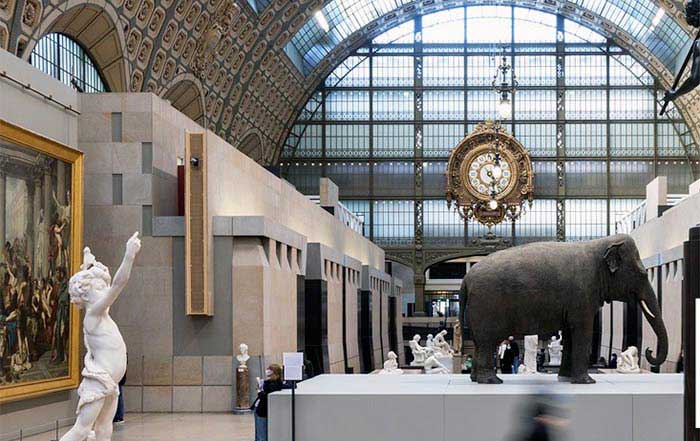With many impressionist treasures at the Musée d'Orsay and ancient gems in some of the world's greatest art museums, the Louvre, Paris has long been an art lover's heaven. Some of the objects found in Paris museums are:
Psyche Revived by Cupid's Kiss- The romance of Psyche and Cupid – yes, the small, winged kid with the love arrows, but grown-up – is one of the great ancient romances, capable of touching the hearts of both classists and ordinary people. Among the last of the era-defining Italians, Antonio Canova depicts the most tragic scene of the narrative with great sensitivity in this statue. Despite the fact that Canova, Napoleon's favorite, extracted the two people from frigid marble, the piece is brimming with passion.
Liberty Leading the People- You've probably seen this artwork before. France's unofficial national picture depicts the famed bare-breasted female personification of Liberty leading warriors during the 1830 "July Revolution." The work's success at the time led the female figure, alias Marianne, to be a respectable symbol of the French Republic. But make no mistake, it does not sugarcoat the ugly truths of France's battle for democratic governance.
The Coronation of Napoleon: When it comes to huge paintings, the Coronation of Napoleon measures an almost astounding 33 feet by 20 feet. Given it was commissioned by the revered General himself and painted by his official painter, Jacques-Louis David, the scale is probably predictable. It also has some of Napoleon's official decorations: The consecration of Emperor Napoleon I and the Coronation of Empress Josephine in the Cathedral of Notre-Dame de Paris on December 2, 1804.
In some ways, it's more of a Neo-Classical Sargeant Pepper's Lonely Hearts Club Band album cover, with a who's who of renowned French leaders from the era, including Napoleon's Family, a little befuddled-looking Turkish envoy, and, of course, the painter himself.
Hammurabi's Code: Here's one from your high school history studies that you should remember. The ancient Babylonian King Hammurabi's code, which dates from 1754 B.C., is not only one of the world's oldest examples of written laws but also one of the world's oldest readable written documents. The majority of it is pretty dry; after all, it is a set of laws describing regulations for commercial transactions, inheritance, divorces, taxes, and the like. It does, however, include one of the first documented occurrences of the phrase "an eye for an eye, a tooth for a tooth." Life in ancient Babylon was not always kind.
I.M. Pei's Pyramid: When I.M. Pei, a Chinese American architect, was commissioned to design a new entry to the Louvre in 1984, it raised a few eyebrows. When he proposed a massive Modernist steel and glass pyramid, it looked like half of Paris erupted. Although the issue has died down over time and the pyramid has garnered many fans, it remains one of the city's most contentious landmarks.
The Coronation of Napoleon : Of course, you must see the Mona Lisa and Delacroix, but there is another masterpiece with a historic heritage buried among the enormous collection at the Louvre that should not be overlooked. It was created in 1807 by the official painter of Napoleon I, the ultimate hero of French history, and its epic grandeur are difficult to ignore. The magnificent, massive artwork depicts the ruler's delight when he is crowned at Notre Dame de Paris.
Mona Lisa by Leonardo da Vinci- The Mona Lisa was created between 1503 and 1517 as a portrait of Lisa Gherardini, Francesco del Giocondo's wife. The masterpiece has attained worldwide acclaim not because its brushstroke patterns are the most artistically skilled or attractive but because the twist of the grin is interlaced with mystery - not to mention the strange lack of brows. Millions go to Paris each year to see the picture, and you can see it for yourself in the Louvre, where it has dominated the permanent exhibition as the most popular attraction since 1797.
Hermaphroditus- You might think you've seen a lot of works like this before, but interestingly, what appears to be a naked woman lying on a comfortable couch is actually a man, or so it's believed. Evidently, it's a representation of the god Hermaphroditus, a Roman replica of the Hellenistic bronze. It was discovered in Rome and shown in the Borghese Gallery before being sold to the occupying French and now resides in the Louvre. Hermaphroditus was a popular subject for paintings and statues, even if modern audiences are less familiar with the theme than the ancient Greeks and Romans were.

